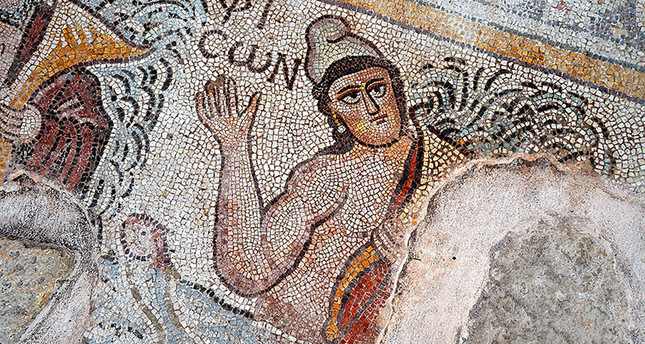Information
Ancient Christian pilgrimage site comes to light in northern Turkey

Excavation works in an ancient Christian pilgrimage site in northern Turkey dating back to 1st century B.C. have been resumed after two years.
Birthplace of the Saint Alypius the Stylite, the ancient city of Hadrianopolis – now located three kilometers east of Eskipazar district of northern Karabük province – was an important site of pilgrimage for early Christians until the city lost its importance in 8th century A.D.
Prof. Dr. Vedat Keleş, head of Underwater Archeology department of Ondokuz Mayıs University, confirmed in a statement that excavation was resumed after previous works based on infrastructure and preservation, establishing the excavation site, lighting and the restoration of Church B's mosaics were completed.
Future excavation works will be carried out by the Kastamonu Museum and Karabük University Archeology Department teaching member Assist. Prof. Dr. Ersin Çelikbaş.
Keleş underlined that there are many more structures to be uncovered in the Hadrianaupolis ancient city and said: "Preservation is more important than excavation and we have been doing this for the past five years."
"This city is the birthplace of Saint Alypius the Stylite, one of the most important personalities of the ancient ages. Because of this, it was used as a pilgrimage site", Keleş added.
So far 14 dispersed public buildings and other structures were identified in the city, which was settled during the late Hellenistic, Roman and early Byzantine periods.
These public buildings consist of two baths, two churches, a defense building, rock tombs, a theater, an arched and dome shaped building, a monumental cult niche, a wall, villas, other monumental buildings and some cultic areas.
The floors of the churches are garnished with mosaics. These mosaics show figures of horses, elephants, deer and gryphons, because of this the ancient city is compared to Zeugma in southeastern Turkey, which is famous for its mosaics.
After excavation works, the site will be opened for visitors.
Believed to have lived between 6th and 7th centuries A.D., Saint Alypius the Stylite is one of the pillar-saints of Christian faith, who climbed on top of pillars and spend the rest of their lives with preaching, fasting and praying.
Category: English
News
Information
Key words:
